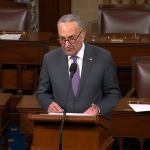In recent news, a horrific shooting incident has raised many questions and reignited discussions on gun control, public safety, and the narratives presented in the media. Pat Ray, a seasoned commentator, shared insights on how major news platforms, like CNN, choose to present such events, often focusing on the identity of the perpetrator to draw attention to broader societal issues. This practice of framing narratives can feel unsettling, especially when the emphasis on race and background overshadows the more pressing discussions about the tragedy itself and the lessons from history.
As the media discussed the shooter, commentators highlighted a curious description: “possibly white.” This vague classification seemed more like an attempt to fit a narrative than a genuine report of facts. The chase for identifying the shooter became a spectacle, reminiscent of how different groups have historically been scapegoated for societal issues. This behavior reflects a pattern seen throughout history, where a specific group is labeled due to the actions of an individual. In that context, it is vital to ask how responsible we are for the narratives we create and perpetuate, and whether we are learning from the lessons of the past.
In parallel, conversations surrounding the controversial detention facility known as “Alligator Alcatraz” have emerged, drawing attention to the treatment of migrants who have crossed illegal boundaries, often due to dire circumstances. Instead of focusing on their stories and the events that led to their journeys, debates have turned toward the conditions they face in detention. As details about cramped spaces and inadequate sanitation surfaced, reflections on human dignity and justice call into question how society treats its most vulnerable members. The treatment of these individuals serves as a sobering reminder that every civilization is judged by how it treats those who find themselves in desperate situations.
Historically, tales of injustice have often surfaced during periods of social turmoil. Legends speak of individuals who spoke up against human suffering and fought against the moral failings of their societies. But too often, the cries for justice fade into the background noise of political debates and media sensationalism. The comparison of detainees’ experiences to historical tragedies is not just an abstract exercise; it serves as a crucial reminder of our shared humanity. The lessons from history urge society to recognize that every story told is part of a larger narrative, one that ultimately challenges us to take a stand against injustice, no matter where it occurs.
People encounter challenging situations both in their private lives and public arenas. The tales of migrants at “Alligator Alcatraz” might feel distant for many, yet they echo the very issues faced by countless others seeking refuge and safety. The opportunity to learn from these experiences lies in the stories that arise, urging society to address root causes rather than merely responding reactively. The complexity of these issues requires a nuanced understanding that surpasses unitary narratives or superficial dichotomies of right versus wrong.
As society wrestles with both present and historical crises, it becomes crucial to reflect on the kinds of narratives we choose to create. A path toward civil discourse involves understanding the interplay of empathy and moral responsibility. Just as history has offered lessons about the suffering caused by misunderstanding and intolerance, today’s narratives must evoke a sense of shared humanity that transcends divisions. The tragedies we encounter, both in the halls of power and the struggles of everyday people, implore us to listen, learn, and ultimately, strive for a better, more just world for all.




